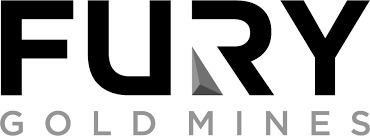Canada stands on the brink of a generational opportunity. With critical mineral demand soaring, gold bullion approaching four thousand US dollars a troy ounce, and global competition intensifying, the right tax policy will result in a wave of exploration and development capital. Three targeted simple tax changes will re-secure Canada’s position as a global mining powerhouse: The simple tax implementations are (1) adopting the Seabridge Gold Supreme Court (BC) decision settling and clarifying the definition of CEE, (2) expanding the definition CDE to include all mine building expenditures including equipment, and (3) removing AMT investment limitations.
Canada has the resources, expertise, and capital to lead the global energy transition, but strategic tax policy will determine whether we fully seize that opportunity. With exploration financing under pressure from international competition, now is the moment for Parliament to act decisively. We strongly encourage you to reach out to your Parliamentarians about adopting these reforms.
Adopt the Seabridge Decision as Law
A recent Supreme Court of British Columbia decision in the Seabridge Gold case decided that all resource expenditures incurred up to the decision to construct a mine qualify as Canadian Exploration Expense (CEE) under the Income Tax Act. The Canada Revenue Agency (CRA) chose not to appeal. If the CRA were to simply state that the Seabridge decision is the view of the CRA, it’s estimated by NRCAN that an additional $ 500M annually will be available in exploration capital. Clear, consistent tax rules give companies and investors the confidence to deploy capital Codifying Seabridge provides that clarity.
Eliminate Alternative Minimum Tax (AMT) Barriers to Flow-Through Share Investment
For more than 50 years, Canada’s Flow-Through Share (FTS) regime has been a cornerstone of mineral exploration financing, directly fueling around 90% of annual exploration activity. Yet recent changes to the Alternative Minimum are undermining its effectiveness.
As readers of this publication know, a flow-through share is simply a newly issued common share in which the resource issuer agrees to spend the funds raised on a list of exploration activities as defined in the Income Tax Act; basically flowing through the deductions and credits to the subscribing shareholders funding the new exploration activity. A flow-through share bought for $1.00 results in the subscriber deducting a $1.00 of CEE. For tax purposes, a flow-share behaves like a limited partnership unit. In this example, the subscriber deducts $1.00 resulting in a reduction in the Adjusted Cost Base (ACB) of the shares to NIL. Even if the shares are subsequently sold for 40 cents there is still a 40-cent capital gain which attracts capital gains tax. We are not advocating for the elimination of capital gains tax.
Under the AMT rules, certain deductions and tax credits are added back into income even though the deductions and credits are entirely available under the standard income tax return (T1). The AMT rules introduced in 1987 were initially designed to ensure that taxpayers could not drive their taxable income to nil. AMT has now morphed such that the much discussed and argued capital gains inclusion rate for anyone who might incur a capital gain over a couple of hundred thousand dollars – for example selling the family cottage to pay for an aging parent’s care – will pay more. Under the rules brought into effect in 2024 the effective capital gains inclusion rate in Ontario is 58%, in Quebec 65%.
When calculating the tax payable under AMT, investors must add back 100% of CEE otherwise deducted against income and the “phantom” capital gain for AMT calculations. Under the AMT rules the free half of a capital gain is added back into income.
There are fewer than 3,000 taxpayers funding about 90% of all flow-through share investments funding exploration jobs in Canada. All are limited by AMT. Under the 2024 AMT amendments the same group of subscribing taxpayers can only buy about 70% of what they were able to invest in 2023.
Tax incentives are the most effective way in which to drive high risk investment capital into resource exploration. Incentives don’t work if they are not accessible under the AMT rules. Two simple fixes would reverse this trend and unlock about $750 million in additional annual flow-through financing:
- Remove the AMT add-back for CEE, as proposed in the August 2024 draft legislation that unfortunately died on the Order Paper.
- Exclude the phantom capital gain from AMT calculations. Investors would still pay capital gains tax under normal rules, but the AMT inclusion would be eliminated.
Expand CDE to Finance Mine Construction
Exploration is just the beginning. The real capital crunch often comes during the “orphan period” between discovery and production, when expenses surge and investor returns are still years away. The Canadian Development Expense (CDE) definition, as currently interpreted, is too narrow to bridge that gap.
Expanding the CDE definition to include all mine construction expenditures, including capital equipment, and allowing investors to deduct these costs over two years at 50% annually would dramatically improve project economics. It would shorten development timelines, attract new classes of investors, and keep Canadian projects competitive with aggressive U.S. incentives.
A Clear Path Forward
These are practical, proven measures with immediate impact. Together, they could unlock well over $1 billion in annual investment, strengthen Canada’s critical minerals supply chain, and accelerate the development of new mines from coast to coast to coast.
As industry leaders gather, the solutions are clear. We urge parliamentarians, policymakers, and stakeholders to support the adoption of the Seabridge decision, the elimination of AMT restrictions, and the expansion of CDE for mine construction.









